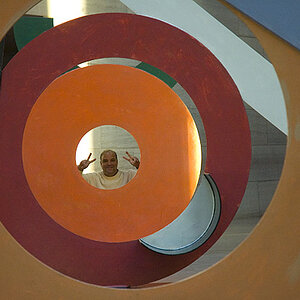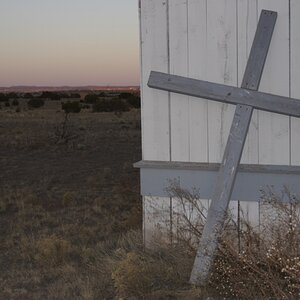- Joined
- Nov 11, 2003
- Messages
- 9,900
- Reaction score
- 119
- Location
- Ahwatukee, AZ
- Can others edit my Photos
- Photos NOT OK to edit
From another Forum I belong to, I found this interesting thread.
==============================================
21 facts or fiction about lenses:
1. Never discard a lens. Screws or other parts may be salvaged for another job. The lens might make a useful magnifier or toy.
2. Optical glass is not like pyrex. It may be soft, easily scratched, or corroded by fungus. Some elements may not even be glass. They may be a transparent mineral or plastic.
3. The coating on inner surfaces may not be as hard or resistant to
corrosion or fungus as that on outer surfaces, especially on old lenses.
4. Although it may still form an image, if a lens element is installed backwards the quality of the image will suffer.
6. Lens assembly is best done in a clean room.
7. Compared to well-sealed prime lenses, zoom lenses may have more
dust and fungus problems because zooming pumps air in and out of
them. Manual diaphragm lenses should have the least problem.
8. If you can afford the time and have patience, trying to repair a lens without instructions is equivalent to a horrible game of chess.
9. Repairing your own lenses makes one willing to pay for an expert to do it.
10. There is less chance of failure repairing a modern assembly-line made lens than reassembling one made before WWII by pick and choose hand assembly trial and error methods. In either case, be aware of metal or lacquer shims around the elements.
11. Non-professional, and some professional, repaired lenses may be
just fine for moderate enlargement--ONLY.
12. Separation of cemented elements creates flare but has little other effect on sharpness.
13. A lens (or camera) that has been out in cold weather should be sealed in a plastic bag before being taken indoors and should be allowed to come to room temperature before removal from the bag. This eliminates moisture condensation which encourages fungus.
14. Fungus is much less of a problem in dry climates. Seacoast areas and the tropics are bad places for cameras, lenses, and film.
15. Removing the coating does not ruin a lens, it only makes necessary a good lens hood and avoidance of flare-creating circumstances or low contrast scenes.
16. Large formats are more forgiving of poor lenses.
17. The important thing is the picture, not the lens.
18. Grease and lubrication of zoom lenses does not get stiff because it is old, but rather because it has collected dust, lint, fine sand, and assorted dirt.
19. Lens diaphragms, cameras and shutters, may get sticky and perform poorly unless exercised occasionally.
20. Some manufacturers routinely used a thread sealer not only on screws but also on some lens retaining rings.
21. The sealant used many years ago may by now have polymerized and
become impervious to solvents.
==============================================
21 facts or fiction about lenses:
1. Never discard a lens. Screws or other parts may be salvaged for another job. The lens might make a useful magnifier or toy.
2. Optical glass is not like pyrex. It may be soft, easily scratched, or corroded by fungus. Some elements may not even be glass. They may be a transparent mineral or plastic.
3. The coating on inner surfaces may not be as hard or resistant to
corrosion or fungus as that on outer surfaces, especially on old lenses.
4. Although it may still form an image, if a lens element is installed backwards the quality of the image will suffer.
6. Lens assembly is best done in a clean room.
7. Compared to well-sealed prime lenses, zoom lenses may have more
dust and fungus problems because zooming pumps air in and out of
them. Manual diaphragm lenses should have the least problem.
8. If you can afford the time and have patience, trying to repair a lens without instructions is equivalent to a horrible game of chess.
9. Repairing your own lenses makes one willing to pay for an expert to do it.
10. There is less chance of failure repairing a modern assembly-line made lens than reassembling one made before WWII by pick and choose hand assembly trial and error methods. In either case, be aware of metal or lacquer shims around the elements.
11. Non-professional, and some professional, repaired lenses may be
just fine for moderate enlargement--ONLY.
12. Separation of cemented elements creates flare but has little other effect on sharpness.
13. A lens (or camera) that has been out in cold weather should be sealed in a plastic bag before being taken indoors and should be allowed to come to room temperature before removal from the bag. This eliminates moisture condensation which encourages fungus.
14. Fungus is much less of a problem in dry climates. Seacoast areas and the tropics are bad places for cameras, lenses, and film.
15. Removing the coating does not ruin a lens, it only makes necessary a good lens hood and avoidance of flare-creating circumstances or low contrast scenes.
16. Large formats are more forgiving of poor lenses.
17. The important thing is the picture, not the lens.
18. Grease and lubrication of zoom lenses does not get stiff because it is old, but rather because it has collected dust, lint, fine sand, and assorted dirt.
19. Lens diaphragms, cameras and shutters, may get sticky and perform poorly unless exercised occasionally.
20. Some manufacturers routinely used a thread sealer not only on screws but also on some lens retaining rings.
21. The sealant used many years ago may by now have polymerized and
become impervious to solvents.




![[No title]](/data/xfmg/thumbnail/42/42486-757c2978c4ecfb0e9dbfca10a0e2d240.jpg?1619740196)




![[No title]](/data/xfmg/thumbnail/42/42492-60144191c917c21139f8acd72f6ba090.jpg?1619740197)

![[No title]](/data/xfmg/thumbnail/42/42487-e35b2848c41aeeb5a93f21809f036a1d.jpg?1619740196)

